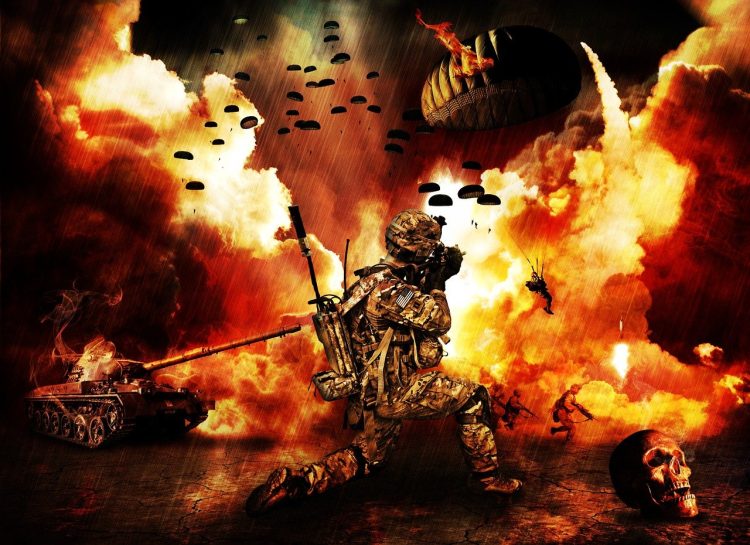Max Brooks’ World War Z is an iconic piece of zombie fiction that redefined the genre when it was published in 2006. It presented a detailed oral history of a global zombie pandemic, told through a series of interviews with survivors. Brooks’ novel captured the complexity of a world ravaged by an unprecedented disaster, focusing on political, social, and human responses to a widespread existential threat. In 2013, the story was brought to the big screen in a film adaptation directed by Marc Forster and starring Brad Pitt. However, the film diverged significantly from the book, presenting a high-octane thriller instead of the original’s collection of survivor accounts. This article examines the differences between the novel and the film adaptation of World War Z, focusing on narrative structure, themes, and character development.
Narrative Structure: Oral History vs. Action-Packed Thriller
One of the most striking differences between World War Z the book and World War Z the film is the narrative structure. The book is presented as an oral history, told through a series of interviews conducted by a United Nations agent after the zombie pandemic has been largely controlled. This format gives the novel a fragmented but rich tapestry of perspectives, with each chapter focusing on different individuals from around the world. It explores the experiences of people from diverse backgrounds, such as soldiers, doctors, politicians, and ordinary citizens, all of whom contribute their stories to provide a comprehensive picture of the zombie apocalypse. This structure emphasizes the global impact of the outbreak, showing how different countries and cultures responded to the crisis and offering a variety of viewpoints on survival, loss, and resilience.
The film, on the other hand, abandons the interview format entirely in favor of a traditional, linear narrative that follows one protagonist, Gerry Lane, played by Brad Pitt. The film presents a fast-paced story that focuses on Lane’s efforts to find a solution to the pandemic, as he travels around the world in search of clues to stop the spread of the infection. This change in narrative structure transforms World War Z from a multifaceted examination of a global event into a more typical action-adventure story centered on a heroic protagonist. The shift to a singular perspective allows the film to deliver a straightforward, suspense-driven plot, but it loses the rich diversity of voices and experiences that made the book so compelling. As a result, the film lacks the depth and complexity of the novel’s exploration of the human condition in the face of a global catastrophe.
Thematic Shifts: Society vs. Survival
The thematic focus of the book and the film also diverges significantly, reflecting the differences in their narrative approaches. The book World War Z is not just a zombie story; it is a social commentary on the ways in which governments, institutions, and individuals respond to crisis. Brooks uses the zombie pandemic as an allegory for real-world issues, such as political incompetence, societal inequalities, and the fragility of modern civilization. Through the accounts of survivors, the novel critiques the failures of bureaucracy, the shortcomings of military responses, and the resilience of communities that band together in the face of adversity. The book paints a vivid picture of how humanity as a whole reacts to a global threat, highlighting both the failures and the triumphs of human spirit and ingenuity.
In contrast, the film places a greater emphasis on individual survival and action. The storyline revolves around Gerry Lane’s quest to find a solution to the pandemic, with the central theme being his determination to protect his family and save the world. The film is filled with high-stakes action sequences, such as the chaotic evacuation of Philadelphia, the zombie siege in Jerusalem, and the tense infiltration of the World Health Organization facility. These scenes are designed to create suspense and excitement, focusing on the immediate dangers of the zombie outbreak rather than the broader social and political implications. While the film does touch on themes of global cooperation and the spread of disease, these themes are largely secondary to the action-driven plot. The result is a film that prioritizes spectacle over the nuanced exploration of societal issues that is central to the book.
Character Development: A Mosaic of Voices vs. A Singular Hero
Another key difference between the book and the film adaptation of World War Z lies in character development. In the novel, there is no single protagonist; instead, the story is told through the voices of numerous characters from around the world. This mosaic of voices provides a wide range of perspectives on the zombie apocalypse, from frontline soldiers and medical professionals to political leaders and everyday citizens. Each character’s story adds a unique layer to the narrative, contributing to a comprehensive understanding of the global impact of the pandemic. The lack of a central hero allows the focus to remain on the collective human experience, emphasizing the importance of community, cooperation, and shared resilience in the face of a common threat.
The film, however, centers on Gerry Lane, a former United Nations investigator who becomes humanity’s best hope for finding a solution to the zombie outbreak. By focusing on a single protagonist, the film takes on a more traditional action-hero narrative, with Lane traveling to different locations, facing danger, and ultimately discovering a potential solution to the crisis. While this approach makes for a more cohesive and engaging action story, it also shifts the focus away from the collective experience that defines the book. The diverse voices and stories that make the novel so powerful are replaced by a singular narrative that emphasizes individual heroism over collective effort. This change results in a loss of the novel’s rich tapestry of characters and the varied experiences that give depth to the story of a global catastrophe.
World-Building: Detailed Realism vs. Hollywood Spectacle
Max Brooks’ World War Z is known for its detailed world-building, which gives the novel a sense of realism that sets it apart from other zombie fiction. The book presents a meticulously researched and highly plausible depiction of a global zombie pandemic, with each interview providing specific details about how different countries and communities responded to the crisis. Brooks explores the geopolitical, economic, and social ramifications of the outbreak, delving into topics such as military strategies, refugee crises, and the psychological toll on survivors. This level of detail creates a rich and immersive narrative that feels grounded in reality, despite the fantastical nature of the zombie threat.
The film, in contrast, takes a more sensational approach to world-building, focusing on large-scale action sequences and visual spectacle. The depiction of the zombie outbreak is characterized by fast-moving hordes of zombies that overwhelm cities and military forces, creating a sense of urgency and chaos. The film’s portrayal of the zombies as swift, aggressive, and relentless is a significant departure from the more traditional, slow-moving zombies depicted in the book. This change adds to the intensity of the action scenes but sacrifices some of the realism and plausibility that define the book’s portrayal of the pandemic. The emphasis on spectacle, such as the dramatic fall of Jerusalem and the climactic showdown at the World Health Organization facility, makes for an entertaining film but lacks the depth and complexity of the novel’s world-building.
The Role of the Zombies: Metaphor vs. Threat
In the book, the zombies serve as a metaphor for a range of societal issues, from government incompetence to the fragility of global supply chains. Brooks uses the zombie outbreak as a lens through which to examine human behavior, both good and bad, in the face of an existential threat. The zombies are a catalyst for exploring themes such as fear, survival, and the capacity for both selfishness and altruism. The focus is less on the zombies themselves and more on the human responses to the crisis, making the novel a thought-provoking exploration of the human condition.
In the film, however, the zombies are primarily a physical threat, serving as the driving force behind the action and suspense. The depiction of the zombies as fast-moving, aggressive creatures creates a sense of immediate danger, and the film’s focus is on the characters’ efforts to escape or combat the zombie hordes. The thematic depth of the zombies as a metaphor is largely absent, as the film prioritizes the thrill of survival over the exploration of broader societal issues. The zombies in the film are an obstacle to be overcome, rather than a means of examining the underlying vulnerabilities of human society.
Adaptation Choices: Appealing to a Broader Audience
The changes made in the adaptation of World War Z from book to film can be understood, in part, as a response to the demands of a broader audience. The novel’s fragmented, interview-based structure and its focus on social commentary may not have translated well to a mainstream Hollywood film, which often relies on a clear, cohesive narrative and a central protagonist to engage viewers. By shifting the focus to a single hero and emphasizing action and spectacle, the filmmakers aimed to create a more commercially viable product that would appeal to a wider audience.
However, these changes also come at a cost. The film adaptation loses much of the depth and complexity that made the book a standout work of zombie fiction. The nuanced exploration of human behavior, the diverse range of perspectives, and the detailed world-building that define the novel are largely absent from the film. Instead, the movie offers a fast-paced, action-oriented story that, while entertaining, lacks the thematic richness and thought-provoking nature of its source material.
In examining the differences between the book and film versions of World War Z, it becomes clear that each medium offers a distinct experience. The novel provides a multifaceted, in-depth exploration of a global crisis, using the zombie outbreak as a vehicle for social commentary and an examination of human resilience. The film, on the other hand, delivers a high-octane thriller that focuses on individual heroism and the fight for survival. While the film may not capture the full scope of Brooks’ vision, it succeeds in creating an engaging and visually spectacular portrayal of a world on the brink of collapse. Both versions of World War Z have their own merits, and together they offer a broader perspective on the zombie apocalypse and the ways in which humanity might respond to such an unimaginable threat.




















